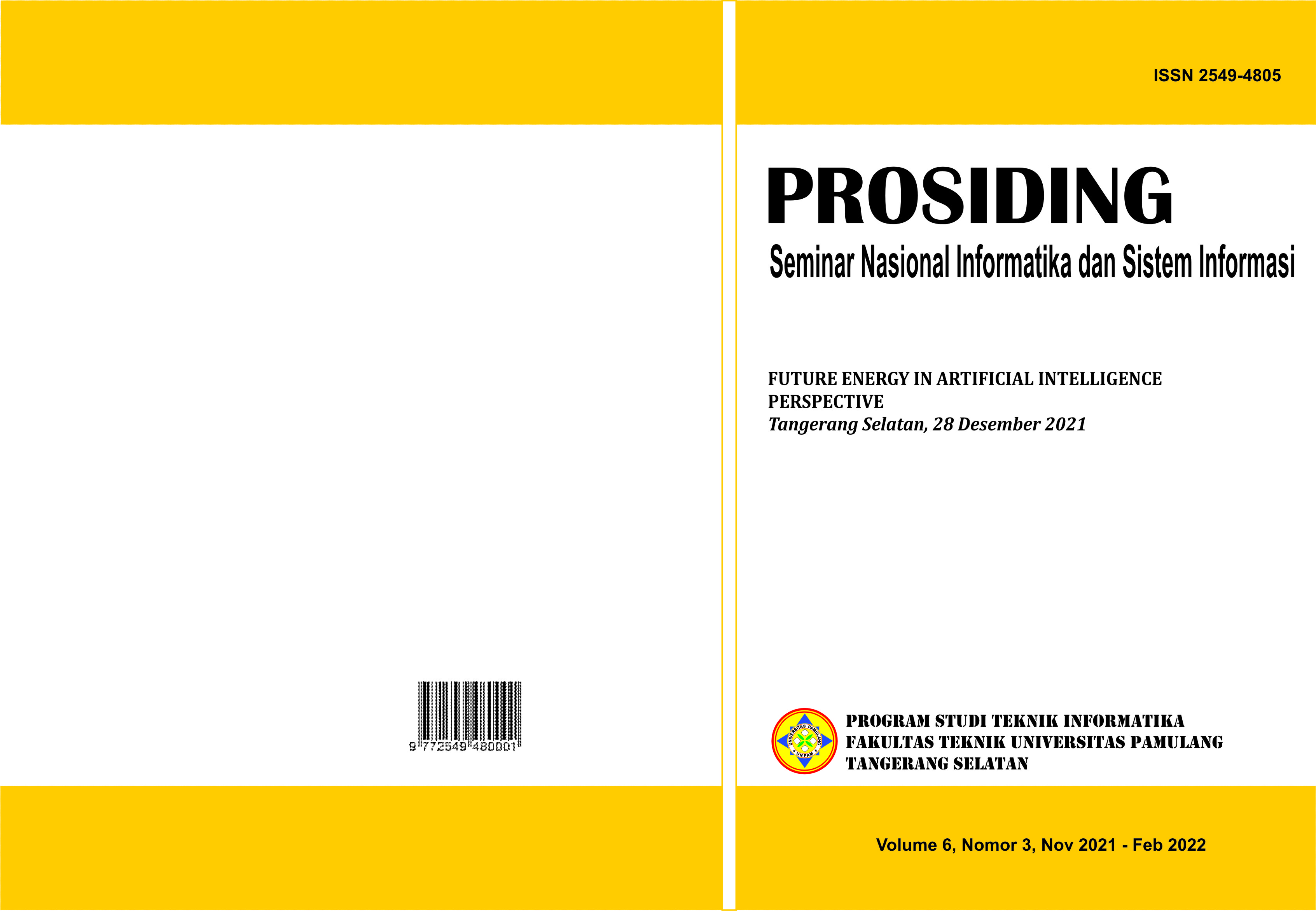RANCANG BANGUN ALAT KONTROL AIR OTOMATIS DENGAN PENDETEKSIAN TINGKAT NUTRISI DAN PH AIR PADA TANAMAN HIDROPONIK
Abstract
Pada daerah perkotaan yang memiliki tingkat populasi penduduk yang tinggi otomatis akan membuat permintaan untuk memenuhi stok pangan termasuk sayuran semakin tinggi. Menanam sayuran hidroponik dapat menjadi solusi untuk memenuhi kebutuhan sayuran walaupun tanahnya tidak cocok untuk menanam sayuran karena tanaman hidroponik hanya membutuhkan air untuk tumbuh. Tingkat nutrisi air yang baik untuk tanaman kangkung hidroponik adalah antara 1050 hingga 1400 ppm, jika kebutuhan nutrisi tidak terpenuhi, pertumbuhan tanaman berisiko lambat, kerdil, atau tumbuh tidak sempurna. Selain nutrisi air, penting juga untuk memperhatikan tingkat pH air untuk pertumbuhan kangkung hidroponik. PH yang ideal untuk tanaman kangkung antara 5.5 sampai 6.5. Apabila pH tidak sesuai dengan kebutuhan tanaman akan mengakibatkan kehilangan kemampuannya untuk menyerap unsur nutrisi yang diperlukan oleh tanaman tersebut. Oleh karena itu perlu dilakukan kontrol secara berkala untuk menjaga kestabilan tingkat nutrisi (ppm) dan pH air. Penelitian ini dapat menjaga kestabilan tingkat nutrisi (ppm) dan tingkat keasaman (pH) dengan menambahkan larutan nutrisi A dan nutrisi B apabila tingkat nutrisi (ppm) terbaca kurang dari standar dan akan menambahkan larutan penaik pH (pH up) apabila tingkat keasaman terbaca kurang dari standar atau penurun pH (pH down) apabila tingkat keasaman terbaca melebihi dari standar. Hasil pembacaan sensor dapat dimonitor melalui webserver yang dapat diakses melalui jaringan.
Kata kunci: Sensor pH, sensor TDS, sistem monitoring, kontrol air hidroponik otomatis, kangkung hidroponik.
References
Aidah, S. N. (2020). Panduan Kilat Bercocok Tanam Media Hidroponik. Jogjakarta: Penerbit KBM Indonesia.
Aini, N., & Azizah, N. (2018). Teknologi Budidaya Tanaman Sayuran secara Hidroponik. Malang: UB Press.
Ambarwati, D., & Abidin, Z. (2021). Rancang Bangun Alat Pemberian Nutrisi Otomatis pada Tanaman Hidroponik. 2(ISSN).
Arifin, R. (2016). Bisnis Hidroponik Ala Roni Kebun Sayur. Jakarta Selatan: PT Agromedia Pustaka.
Barus, E. E., Louk, A. C., & Pinggak, R. K. (2018). Otomatisasi Sistem Kontrol pH dan Informasi Suhu pada Akuarium Menggunakan Arduino Uno dan Raspberry PI 3. Jurnal Fisika Sains dan Aplikasinya.
Iqbal, M. (2016). Simpel Hidroponik. Yogyakarta: Andi Offset.
Mashudi, R., Ma’ruf, M. A., & Santoso, T. W. (2020). Perancangan Sistem Nutrisi Otomatis pada Tanaman Hidroponik dengan Mikrokontroler NodeMCU berbasis IoT.
Mufida, E., Anwar, R. S., & Rosmawati, R. A. (2020). Perancangan Alat Pengontrol pH Air Untuk Tanaman Hidroponik Berbasis Arduino Uno. Jurnal Inovasi dan Sains Teknik Elektro.
Nurcahyo, A. R., Prawiroredjo, K., & Sulaiman, S. (2020). Prototipe Sistem Pembuatan Larutan Nutrisi Otomatis pada Hidroponik Metode Nutrient Film Technique.
Putra, A. Y., & Pambudi, W. S. (2017). Sistem Kontrol Otomatis Ph Larutan Nutrisi Tanaman Bayam pada Hidroponik NFT (Nutrient Film Technique). Ilmiah Mikrotek.
Ramadhan, M. S., & Rivai, M. (2018). Sistem Kontrol Tingkat Kekeruhan Pada Aquarium Menggunakan Arduino Uno. JURNAL TEKNIK ITS.
Setiawan, H. (2017). Kiat Sukses Budidaya Cabai Hidroponik. Yogyakarta: Bio Genesis.
Downloads
Published
Issue
Section
License
Authors who publish with this journal agree to the following terms:
- Authors retain copyright and grant the journal right of first publication with the work simultaneously licensed under a Creative Commons Attribution License that allows others to share the work with an acknowledgement of the work's authorship and initial publication in this journal.
- Authors are able to enter into separate, additional contractual arrangements for the non-exclusive distribution of the journal's published version of the work (e.g., post it to an institutional repository or publish it in a book), with an acknowledgement of its initial publication in this journal.
- Authors are permitted and encouraged to post their work online (e.g., in institutional repositories or on their website) prior to and during the submission process, as it can lead to productive exchanges, as well as earlier and greater citation of published work (See The Effect of Open Access).
Prosiding Seminar Informatika dan Sistem Informasi have CC-BY-NC-SA or an equivalent license as the optimal license for the publication, distribution, use, and reuse of scholarly work.
In developing strategy and setting priorities, Prosiding Seminar Informatika dan Sistem Informasi recognize that free access is better than priced access, libre access is better than free access, and libre under CC-BY-NC-SA or the equivalent is better than libre under more restrictive open licenses. We should achieve what we can when we can. We should not delay achieving free in order to achieve libre, and we should not stop with free when we can achieve libre.
Prosiding Seminar Informatika dan Sistem Informasi is licensed under a Creative Commons Attribution 4.0 International License
YOU ARE FREE TO:
- Share — copy and redistribute the material in any medium or format
- Adapt — remix, transform, and build upon the material for any purpose, even commercially.
- The licensor cannot revoke these freedoms as long as you follow the license terms

